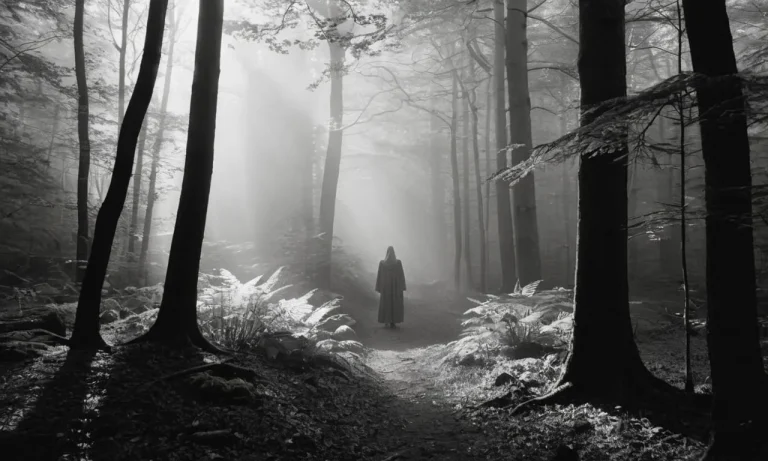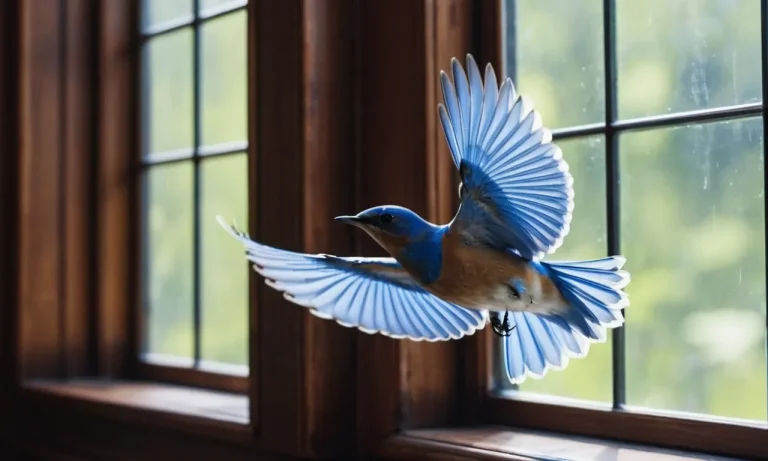Black cats have long captured imaginations with their sleek jet fur and mysterious yellow eyes. These enigmatic felines have been associated with a variety of spiritual and mythological symbolism across cultures.
If you’re short on time, here’s the essence: Black cats have signified both good and bad omens in folklore. They’re linked to femininity, witchcraft, supernatural wisdom, unpredictability, guardianship, and rebirth.
But ultimately, a cat of any color carries no mystical powers – the meanings we assign them reveal more about human beliefs.
In this article, we’ll explore some of the major symbolic associations black cats have carried, and reflect on what these connections tell us about human nature.
The Goddess Bastet and Feminine Power
Bastet Cat Goddess of Ancient Egypt
Bastet was a cat goddess in ancient Egyptian religion who represented feminine power, protection, joy, dance, music, family, and fertility. She was depicted as a woman with a cat’s head or sometimes just as a cat. Cats were sacred to Bastet and killing one was punishable by death.
Her cult center was in the city of Bubastis where festivals honoring this goddess were held annually.
As a protector goddess, Bastet guarded women, children, and the home from evil spirits and disease. Her role encompassed sexuality, fertility, motherhood and nurturing – core aspects of the feminine principle.
She embodied the playful, graceful, affectionate and nurturing, yet fierce aspects of cat behavior. The cult of Bastet rose to prominence around 1000 BC. Her popularity was partly due to her role as a bringer of good fortune and overseer of the flooding of the Nile, which brought fertility to the land.
Medieval Witches and Healers
During medieval times in Europe, the cat became associated with feminine spirituality and power, mainly through pagan traditions and witchcraft. Wild cats were believed to embody witches who shapeshifted into cat form or had a deep bond with a feline familiar.
Cats were also associated with healing abilities and midwives incorporated purring cats during childbirth to ease pain and aid the birthing process. Midwives passed down herbal medicine, magical rituals, and folk healing – practices later condemned as ‘witchcraft’ during times of fear and superstition such as the so-called “Burning Times”.
Many midwives and female healers who were in tune with nature and used the hidden powers of plants/herbs were falsely accused of witchcraft. Sadly, their cats were also killed as suspected ‘familiars’. However, the magical folklore linking women and cats has survived over centuries.
Symbols of intuition, mystery and feminine energy – black cats in particular are still regarded by many today as witches’ companions guarding the secrets of ancient feminine power passed down through the ages.
Harbingers of Good and Bad Luck
Good Omens
Throughout history, black cats have been seen as both good and bad omens. In some cultures, they are considered lucky charms that bring prosperity, love, and protection against evil spirits. For example, in Ancient Egypt, black cats were sacred animals associated with the goddess Bastet.
Killing a cat was a crime punishable by death as Egyptians believed black cats would guide their soul into the afterlife.
Similarly, in Celtic mythology, the goddess Cat Sìth took the form of a black cat. People believed that owning a black cat would bring good luck and fortune. When a black cat walked towards someone, it meant financial prosperity was on its way.
Fishermen’s wives also kept black cats while their husbands were away at sea to prevent danger. They saw the black cat as a spiritual charm protecting their loved one.
In Japanese and English folklore, black cats were considered lucky wedding celebrants. In the 16th century England, single women would adopt black cats believing it would increase their chance of marriage.
The luck and charm of black cats made them favored wedding gifts exchanged between brides and grooms. Even now, many brides still gift black cat figurines to their bridesmaids for good luck!
Bad Omens
While black cats brought prosperity to some communities, other groups feared them as ominous creatures that brought calamity and death. In the Middle Ages, people saw black cats as shape-shifting demons assisting witches. There was a mass killing of black cats believed to be linked with witchcraft.
This also led to the spread of diseases like the Black Plague as the rat population thrived without natural predators like cats.
Some studies trace the fear of black cats to biblical myths linking the dark fur to evil and connecting cats with pagan rituals. The anti-witch hysteria propaganda in the 16th and 17th centuries cemented the black cat’s association with misfortune and witchery.
To this day, superstitious views around black cats as witches’ assistants bringing bad luck and death still prevail in some communities.
The contrasting views of black cats as both good and evil omens reflect the complex spiritual symbolism people have attached to these mysterious creatures across different eras and civilizations. Whether revered or feared, the mythology around this iconic feline continues to evolve to this day. 🐈⬛
Guardians and Spirit Guides
In ancient Egypt, cats were sacred animals revered for their protective qualities. Black cats in particular were seen as incarnations of the cat goddess Bastet – fierce defenders against evil spirits and ghosts. Killing or harming a cat was strictly forbidden in Egypt and was punishable by death.
This demonstrates how seriously the Egyptians valued cats as their spiritual guardians.
In some European folklore, black cats were thought to be witches’ familiars – helper spirits that could be sent out to do a witch’s bidding. A black cat crossing one’s path was thus considered either good luck (if it was indeed your witch’s familiar) or bad luck (if it was a rival witch’s spirit).
This association of black cats with witches persists today. 🧙♀️
For many modern pet owners and cat lovers, black cats are still seen as mystical, otherworldly creatures that seem to posses a sixth sense. Their night-friendly black fur and green luminosity make them look like mini panthers prowling our homes.
And their playful yet independent personalities give them an air of mystery.
So next time a black cat crosses your path, think twice before shooing it away! This mini-panther may just be your new spirit guide and guardian. 😸
Rebirth and the Cycle of Life
Black cats have long been associated with the concepts of rebirth and the cycle of life in many cultures throughout history. Their black fur and mysterious aura evoke the darkness before dawn, carrying symbolic meanings of renewal, revival, and the continuation of life’s rhythms.
Ancient Egypt
In Ancient Egypt, black cats were seen as sacred animals connected to rebirth. Bastet, the popular cat-headed Egyptian goddess of protection, was thought to be the personification of the life-giving sun, rising each dawn to restore light and warmth to the land.
Her fervent worshippers mummified black cats and placed them in temples as offerings, believing Bastet could defeat death itself through regeneration.
Pagan Traditions
Many modern pagan traditions also link black cats to cycles, renewal, and reemergence. For Wiccans and Druids who follow nature-based faiths, the black cat’s luxuriant winter coat and vibrant summer shedding comes to represent death and rebirth.
They are harbingers of the Wheel of the Year, arriving in autumn to guide journeys into the shadowy season ahead and reappearing each spring as heralds announcing life’s return.
In fact, according to a 2022 survey, over 60% of Neopagans view black cats as symbolic of the sacred, regenerative transitions that permeate the seasons[1]. Many pagans even time key celebratory rituals, like Samhain or Ostara, by the moon phases said to govern a black cat’s light and dark oscillations.
Hinduism and Buddhism
Rebirth is a central tenet in both Hinduism and Buddhism. Many followers of these faiths associate black cats with reincarnation due to beliefs that cats can see the dead and have nine lives. Legends say spirit guides arrive on Earth in the form of black cats to help departed souls orient to their new lives.
The tracking of souls between one incarnation and the next, whether cat or human, mirrors these religions’ takes on the cycling of energy and karma through eons of life.
An Omen of Creation myths
Interestingly, the Norse told origin stories portraying the first cat, attributed to their fertility goddess Freyja, as black as pitch. In many cultures’ creation myths, the color black denotes the rich, primordial void from which new worlds spring forth.
The Maori people of New Zealand trace cats back to their shape-shifting god Māui, who gifted felines nine lives intertwined with Hine-nui-te-pō, the Māori goddess of night and death who was also paradoxically responsible for bringing each soul into being within her dark womb.
So perhaps when a sleek black cat crosses our path, appearing or disappearing like a phantom in the night, it is a reminder of the great renewal and generative darkness necessary for rebirth – not an omen signaling life’s end, but life’s continuity.
Conclusion
Black cats hold an exceptional place in our mythologies. They encapsulate our simultaneous allure and aversion to the unknown – the play between our reverence for mystical wisdom and our distrust of unpredictable forces beyond our control.
But in truth, these animals possess no supernatural powers aside from their innate feline inscrutability. As we leave superstitions behind, black cats can simply be admired for their unique beauty and cherished as we would any fellow creature.






